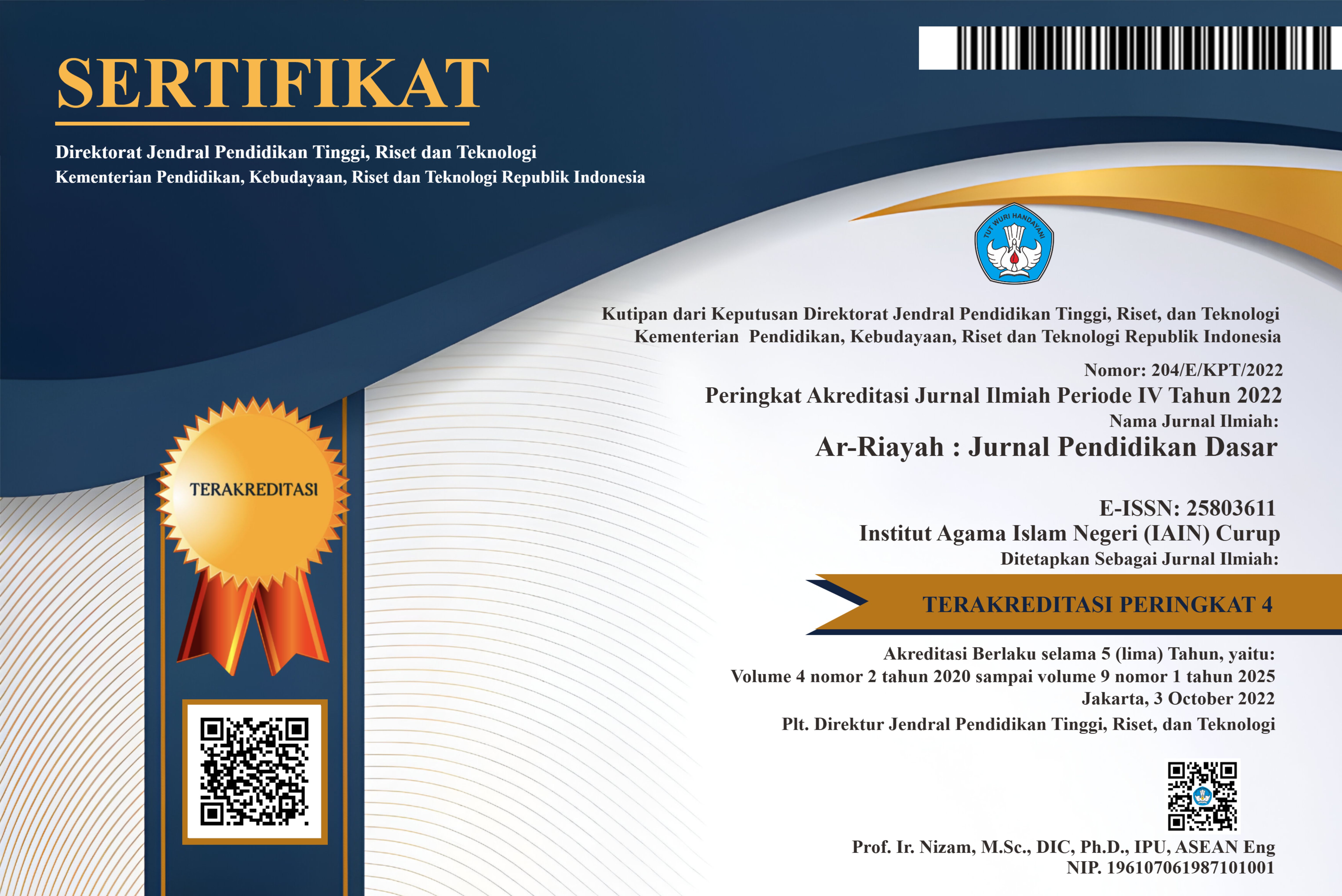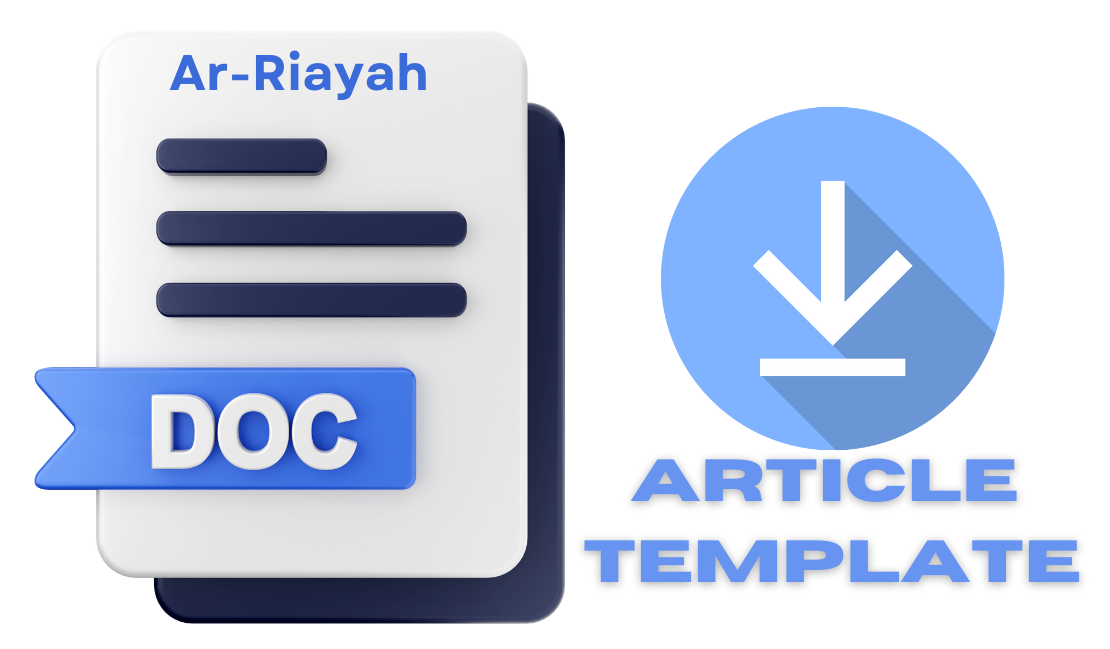Upaya Meningkatkan Aktivitas Dan Hasil Belajar Peserta Didik Dengan Menggunakan Metode Realistic Mathematics Education (RME) di SDN 2 Kotagajah Lampung Tengah Tahun Pelajaran 2019/2020
DOI:
https://doi.org/10.29240/jpd.v5i1.2681Keywords:
Activities, Learning Outcome, and RMEAbstract
The process of teaching and learning mathematics in elementary schools is generally presented in an abstract form, learning is dominated by lectures, exercises, and question and answer methods so that students become passive and find it difficult to understand the material. This study aims to determine the level of activity and student learning outcomes in mathematics class VA students of SDN 2 Kotagajah. So that mathematics learning activities can be felt meaningful and produce activity and learning outcomes as well as learning objectives to be achieved properly is to apply the approach of realistic mathematics education (RME). Realistic Mathematics Education (RME) is an approach that emphasizes the conceptualization of teaching and has a tendency for students to become active participants in the teaching and learning process. This research is a classroom action research with data analysis in the form of qualitative and quantitative analysis using test data collection tools, observation, and documentation. This study concludes that there is a relationship between student activity and learning outcomes and the use of successful methods to achieve the desired targets. The average percentage of student activity in the first cycle was 67% and remembering as much as 11% and in the second cycle was 78%. The percentage of completeness of learning outcomes reached 52% and 76% in cycle II. So, there was an increase in learning outcomes from cycle I to cycle II, which was 24%.
Downloads
References
Afriansyah Ekasatya Aldila, “Makna Realistic dalam RME dan PMRI,†LEMMA VOL II, no. NO. 2, (Maret 2016)
Andriani Sri, “Upaya Meningkatkan Hasil Belajar Siswapada Mata Pelajaran Matematika Materi Kecepatan Melalui Model RME (Realistik Mathematics Education) Siswa Kelas V SDN 105855 PTPN II Tanjung Morawa Kabupaten Deli Serdang T.A 2018/2019.,†Universitas Islam Negeri Sumatera Utara, 2019.
Hasan Hasmiana, “Kendala yang Dihadapi Guru Dalam Proses Belajar Mengajar Matematika Di SD Negeri Gani Kabupaten Aceh Besar,†Jurnal Pesona Dasar Vol. 1, no. 4 (Oktober 2015
Herman Tatang, “Meningkatkan Kualitas Pembelajaran Matematika Sekolah Dasar Melalui Lesson Study,†Jurnal Pendidikan Volume 13, no. Nomor 1, (Maret 2012
Karyawati, Proses Belajar Mengajar Kelas V A SDN 2 Kotagajah, 13 September 2019.
Kroch Oswald dalam Alisuf Sabri, Pengantar Psikologi Umum & Perkembangan, (Jakarta: Pedoman Ilmu Jaya, 1997)
Purnomosidi, Wiyanto, Safiroh, Ida Gantiny, Buku Guru: Senang Belajar Matematika SD/MI Kelas V, 1 ed, (Jakarta: Kementerian Pendidikan dan Kebudayaan, 2018).
Rahayu Ervina, “Pengembangan Bahan Ajar Berbasis Pendidikan Matematika Realistik Indonesia (PMRI) Dengan Media Scrabel Pada Materi Hubungan Antar Satuan Siswa Kelas V MI Miftahul Ulum Tlogosari-Tutur-Pasuruan.,†Universitas Islam Negeri MAulana Malik Ibrahim Malang, 2014.
Downloads
Published
How to Cite
Issue
Section
Citation Check
License
Authors who publish with Ar-Riayah: Jurnal Pendidikan Dasar agree to the following terms:
Authors retain copyright and grant the journal right of first publication with the work simultaneously licensed under a Creative Commons Attribution-NonCommercial-ShareAlike 4.0 International License (CC BY-NC-SA 4.0) that allows others to share the work with an acknowledgment of the work's authorship and initial publication in this journal.
Authors are able to enter into separate, additional contractual arrangements for the non-exclusive distribution of the journal's published version of the work (e.g., post it to an institutional repository or publish it in a book), with an acknowledgment of its initial publication in this journal.
- Authors are permitted and encouraged to post their work online (e.g., in institutional repositories or on their website) prior to and during the submission process, as it can lead to productive exchanges, as well as earlier and greater citation of published work (See The Effect of Open Access).










